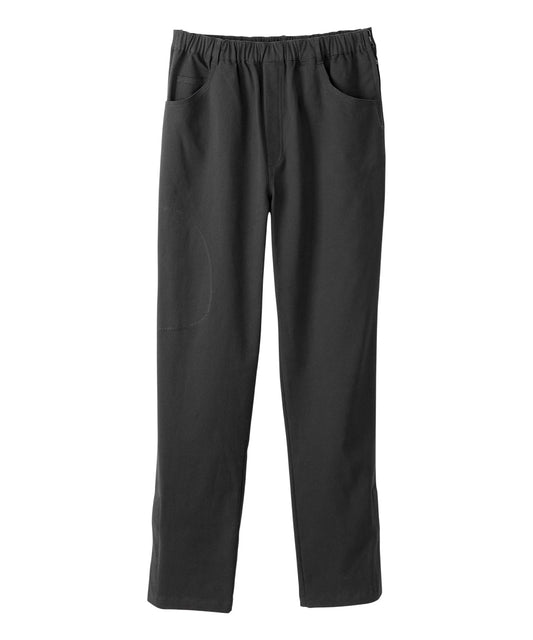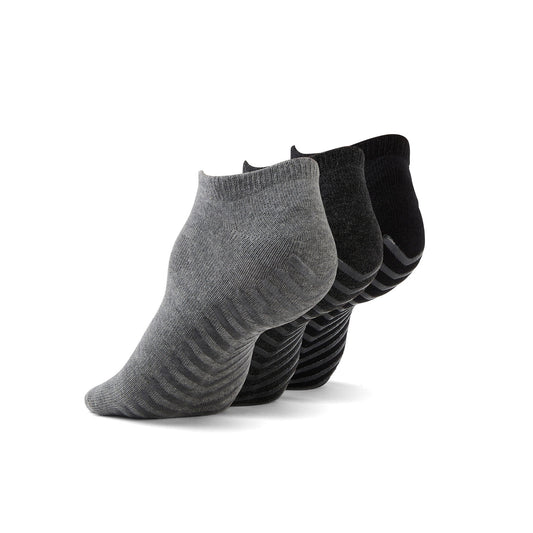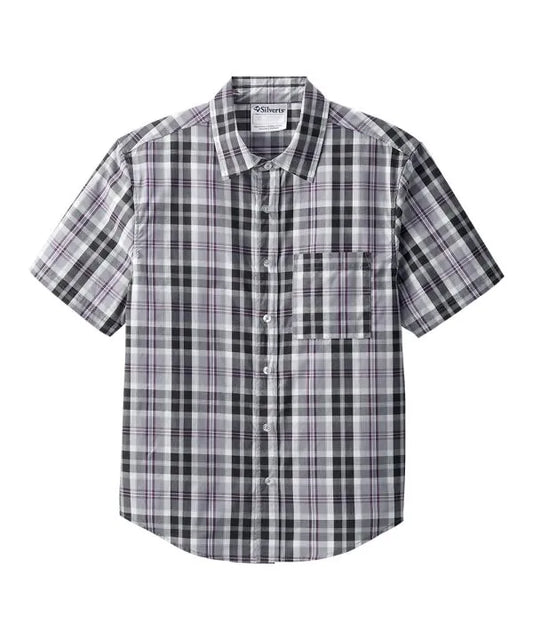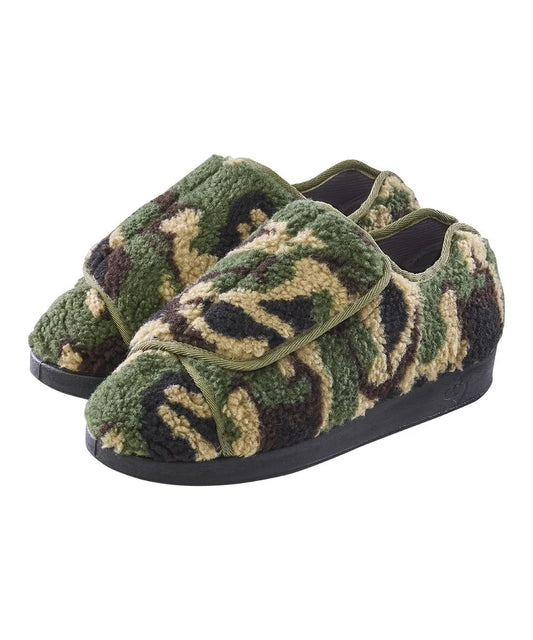When one is spending the greatest, if not all, portion of one's day in bed, whether one is recovering from a procedure, managing a chronic condition, or coping with advanced age, comfort is a daily necessity.
This article of clothing forms a core element of who we are. For bedridden patients, a lack of appropriate clothing can create a feeling of a chilly, impersonal setting and cause the patient distress. Appropriate adaptive clothing, on the other hand, can maintain self-image, make dressing easier for caregivers, and protect the patient's health.
In this guide, we will discuss the different types of adaptive clothing designs, the most appropriate fabrics for skin health, methods to remove clothes without having to lift the patient, and strategies by caregivers that make the process easy. In addition, we will highlight three adaptive clothing items that offer style and functionality for bedridden patients.
Open-Back Vs. Side-Snap Designs: Which Is Better?
When purchasing adaptive clothing, two basic design styles are most widely used: open-back and side-snap wear. Each of these fits the purpose of making dressing easier; nonetheless, each responds to somewhat different needs.
Open-back designs
Open-back clothing has overlap panelling on the back, which is closed on the shoulders through the use of Velcro or snaps. The special construction makes dressing patients easy, as patients can put on clothing without having to sit up, roll over, or lift their arms considerably.
Why it works well:
Suitable for patients with severe mobility limitations or complete immobility. Minimizes stress on a caregiver, consequently reducing the demand for hefty lifting. Allows easy changes during moments when incidents or spills occur.
Challenges to recognize:
It might not have complete back coverage when worn alone, and a blanket or cardigan might be needed for warmth and coverage. The overlapping flaps also sometimes change positions during the rolling process, causing discomfort to more active bedridden patients.
Side-snap designs
Side-snap clothes are defined by side seam openings extending from under the arm to the hem, and are normally closed by snaps or zippers.
Why it works well:
Offers better coverage than open-back clothing, thus helping in maintaining dignity. Allows partial undressing for medical evaluation without having to remove the garment completely. This method is ideal for patients with restricted mobility, especially those able to roll a little towards one side.
Realities to confront:
Dressings also need a minimal amount of gentle movement from patients. The caregivers must be careful not to trap the skin between zippers or snaps.
Which should you choose?
In situations where the patient is thoroughly immobile, clothing with open backs is the easiest and safest option. Patients who have limited movement or who prefer a more standard look on clothing will find that side-snap designs provide a satisfactory balance between form and function. Most often, having both types available is the most convenient system.
Best Fabrics for Prevention of Bedsores
Pressure ulcers, also known as bedsores, are a concern for bedridden patients. Pressure ulcers occur when continuous pressure hinders a body part from getting proper blood flow, and they most often appear on the hips, tailbone, heels, and elbows.
Although appropriate bedding and positioning are certainly important, clothing design is the most important preventive measure.
Key Details Pertaining to Clothes to Consider
-
Softness: Reduces skin irritation. Look for brushed cotton, bamboo blends, or jersey knit.
-
Breathability: Prevents excess heat and moisture buildup, which can break down skin.
-
Moisture-Wicking Properties: Keeps skin dry, reducing the risk of sores.
-
Stretching allows for natural movement by avoiding pulling or bunching.
Best Fabrics To Prevent Bedsores
Cotton: Classic choice for softness and breathability. Works well for underlayers.
Bamboo: Naturally antibacterial, moisture-wicking, and extremely soft.
Modal: Lightweight, smooth, and breathable for year-round use for everyone.
Technical moisture-wicking fabrics are especially beneficial for patients who sweat excessively or who live in hot weather.
Fabrics to avoid
Stiff denim or heavy canvas forms pressure points and causes friction.
Poor-quality polyester tends to hold heat and moisture.
Wool, when worn next to bare skin, tends to cause irritation and itching.
How To Change Clothes Without Lifting The Patient
One of its greatest benefits is its ability to reduce, and even eliminate, the requirement to lift a bedridden patient while dressing them. Therefore, its creation is not only a source of relief for carers but also a tool for reducing suffering for the patient.
Regarding Tops
-
Place the garment by putting the side-snap or open-back top on the bed.
-
Start by aligning the injured side: Place the patient's weaker arm through the sleeve carefully.
-
Envelop the garment: For open-back styles, position the panels as such and fasten them at the shoulders. For side snap styles, place the garment across the chest and snap it along the sides.
-
Smooth the fabric to prevent bunching and pressure spots.
Regarding Trousers
-
Unzip completely or unzip the side zippers.
-
Start by placing each leg in position, starting with the weaker leg.
-
Provide a safe closure without ensuring that seams sit naturally on the skin.
-
Check the waistband comfort before finishing.
Professional Caregiver Recommendations
Keep movements slow and explain each step before you do it.
Put a gentle blanket under the patient to make movement easy without straining clothing.
A second caregiver is recommended to assist for patients who are heavier or more delicate.
Where To Find Affordable Hospital-to-Home Apparel
The decision to dress in home attire instead of hospital gowns is an important symbolical moment for many patients. This decision indicates a promise of recovery, comfort, and return to normal. However, finding adaptive clothing, which is affordable, fashionable, and functional, can be a difficult task.
Below are three outstanding adaptive products specifically for bedridden patients:
1 Men's Pants with Side Zipper

These are regular-looking men's trousers; however, these trousers have hidden zippers on the sides, hence providing comfort when one has to lie down. They are most suited for post-surgery recovery, comfortable home attire, or even going for a medical checkup. The waist is made to be comfortable and stretchable, hence providing comfort all day.
2. Unisex Recovery Pants with Side Zippers

The men’s and women’s pants are especially ideal for easy changing of clothes. The zippers run the length of the leg, thus eradicating the need to take them off over the hips. In addition, the light fabrics are breathable and strong, making them suitable for prolonged wear.
3 .Women's Soft Knit Pants with Easy Touch Closures

Designed using ultra-soft knitting, these easy-to-wear trousers provide optimal comfort with little effort needed to put them on. The easy-to-use closure is especially helpful for patients with restricted hand mobility, as well as caregivers who require rapid changes in garments. In addition, they offer a refined finish that maintains dignity while providing superior comfort.
When shopping for hospital-to-home apparel, focus on:
-
Machine-washable fabrics make easy maintenance possible.
-
Elements that are modified are stylistically coherent.
-
Use Colours that are easy to coordinate and mix.
Caregiver Hacks For Easier Daily Dressing
Despite the effectiveness of adaptive clothing, small adjustments to one's daily routine can make dressing easier for everybody.
Plan Ahead in Advance
Select clothing for the day ahead of time to avoid rushing, especially in the morning.
Layer smart.
Light, slim layers help caregivers regulate the patient's temperature effectively without requiring a change of garments.
Use magnetic closures. Where the patient has problems with managing small muscle groups, providing button substitution for magnetic fasteners can reduce frustration. Follow a dressing timetable. A scheduled routine involves dressing within the daily schedule for a patient, thus instilling reassurance and support for cognitive conditions like dementia. Prepare Alternative Attire Choices. You should always keep a spare outfit handy to allow easy changes after accidents or spills. Sustaining dignity through presentation. In bedridden patients, dressing has the power to influence mood, self-esteem, and even social behaviour. Having clothes that are not medical uniforms but “real clothes” can allow patients to keep a sense of themselves intact. Caregivers should involve the patient in selecting clothes on a regular basis, including colour, style, and accessories, as this is not only about dressing someone's body, but also about dressing the self.
Final Thoughts
Adaptive clothing is essential for maintaining both comfort and dignity for bedridden patients. The choice of fabrics, together with the development of dressing procedures, suggests that even the slightest changes can make a significant difference in the quality of life. Through careful design, performance characteristics, and gentle, skin-loving fabrics, appropriate clothing can aid in the protection of health, assist in facilitating care, and allow patients to maintain a sense of identity.
Bedridden optimized clothes are more than just clothing. They are tools that support ease, comfort, and confidence. And with so many stylish options available, there’s no reason to settle for less than what truly works for you. Are you ready to find your next favourite pair? See the full range of adaptive clothing at JuneAdaptive.com.
To read more posts like this and receive updates, sign up below for the June Adaptive newsletter.















